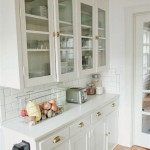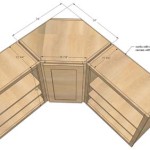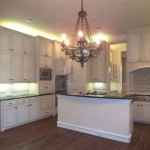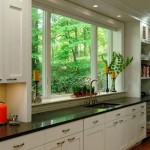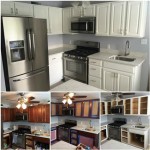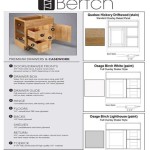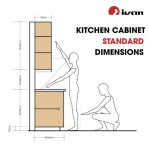Maximizing Space: Small Kitchen Hanging Cabinet Design
Small kitchens present unique design challenges, especially regarding storage. Hanging cabinets play a crucial role in maximizing vertical space and keeping countertops clutter-free. Careful planning and strategic design choices can transform a cramped kitchen into an efficient and aesthetically pleasing space. This article explores various design elements to consider when choosing hanging cabinets for a small kitchen.
Cabinet Size and Configuration
Standard upper cabinets are typically 30 or 36 inches tall. In a small kitchen, opting for taller cabinets, reaching the ceiling, can significantly increase storage capacity. This eliminates the wasted space above standard cabinets, which often accumulates dust. Additionally, consider varying cabinet depths. While standard depth is 12 inches, shallower cabinets (9 or 10 inches) can be used in specific areas to reclaim valuable inches without sacrificing storage.
Door Styles and Functionality
Cabinet door styles significantly impact both aesthetics and functionality. Traditional hinged doors, while classic, can require ample swing-out space, which can be problematic in a small kitchen. Consider the following alternatives:
- Sliding doors: Ideal for narrow spaces or areas with limited clearance.
- Folding doors: Bi-fold or lift-up doors maximize access while minimizing swing-out space.
- Pocket doors: These doors slide into the cabinet frame, completely eliminating door swing clearance issues.
Material Selection
Cabinet material choice affects both durability and visual impact. While solid wood provides a classic and enduring look, it can be expensive. Consider the following alternatives:
- Plywood: A cost-effective and sturdy option that can be painted or stained to match any decor.
- MDF (Medium-Density Fiberboard): Another affordable choice, offering a smooth surface ideal for painting.
- Particleboard: A less expensive option but can be less resistant to moisture.
Optimizing Interior Organization
Maximizing the interior space of hanging cabinets is crucial in a small kitchen. Consider incorporating the following organizational features:
- Pull-out shelves: Provide easy access to items stored at the back of the cabinet.
- Spice racks: Dedicated spice storage keeps spices organized and readily accessible.
- Lazy Susans: Corner cabinet organizers that maximize space utilization.
- Vertical dividers: Organize baking sheets, cutting boards, and trays.
Lighting Considerations
Integrating lighting into hanging cabinets can enhance both functionality and ambiance. Under-cabinet lighting illuminates work surfaces, making tasks easier and safer. Interior cabinet lighting enhances visibility within the cabinets, simplifying locating items.
Color and Finish
The color and finish of hanging cabinets significantly impact the overall aesthetic of the kitchen. Light colors can make a small kitchen feel larger and brighter. Consider the following color palettes:
- White or cream: Creates a clean and airy feel.
- Light gray or blue: Offers a subtle and sophisticated look.
- Pastel shades: Adds a touch of personality and warmth.
For the finish, consider matte, satin, or gloss options, depending on the desired look and maintenance requirements. Matte finishes minimize fingerprints and smudges, while gloss finishes provide a sleek and modern appearance.
Hardware Selection
Cabinet hardware, including knobs, pulls, and hinges, can significantly enhance the overall aesthetic of the kitchen. Choose hardware that complements the cabinet style and overall design scheme.
- Simple knobs and pulls: Ideal for a minimalist or modern look.
- Ornate handles: Suitable for traditional or transitional styles.
- Invisible hardware: Creates a seamless and contemporary feel.
Glass-Front Cabinets
Strategically incorporating glass-front cabinets can add visual interest and create a sense of openness in a small kitchen. Use glass-front cabinets to display attractive dishware or glassware, adding a decorative touch while keeping frequently used items accessible.

Image Result For Hanging Cabinet Design Small Kitchen Simple Cabinets Remodel Layout

Display Cabinets Above Breakfast Bar Not The Right Colors But Similar Idea Interior Design Kitchen Remodel Small Bedroom

Addition Storage Hanging Cabinets For Small Kitchen Cocinas De Casas Pequeñas Diseño Muebles Cocina Comedor

Cocinas Chicas De Casas Pequeñas Diseño Muebles Cocina Interiores

Hanging Cabinets Kitchen Design Ideas Pictures Remodel And Decor Upper Furniture Small

41 Genius Kitchen Organization Ideas The Family Handyman

Kitchen Cabinets Es Easywood S

Pin By Ahmad Aslam On Polish Colors Kitchen Design Small Interior Modern Cabinet

Modular Kitchen Solutions For Short People Designcafe

70 Best Small Kitchen Design Ideas Layout Photos
Related Posts

